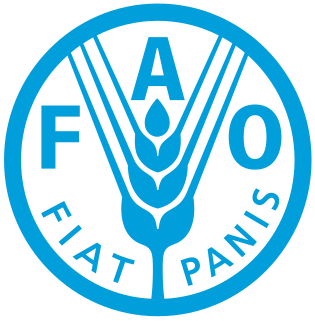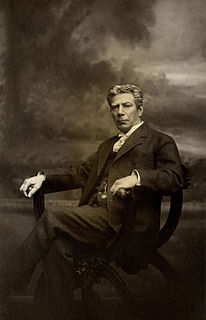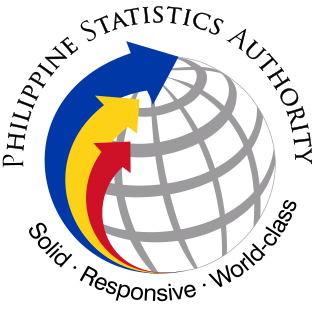Related Research Articles

The Food and Agriculture Organization of the United Nations (FAO) is a specialized agency of the United Nations that leads international efforts to defeat hunger and improve nutrition and food security. Its Latin motto, fiat panis, translates to "let there be bread". It was founded in October 1945.

The Israel Central Bureau of Statistics, abbreviated CBS, is an Israeli government office established in 1949 to carry out research and publish statistical data on all aspects of Israeli life, including population, society, economy, industry, education, and physical infrastructure.

The Italian National Institute of Statistics is the main producer of official statistics in Italy. Its activities include the census of population, economic censuses and a number of social, economic and environmental surveys and analyses. Istat is by far the largest producer of statistical information in Italy, and is an active member of the European Statistical System, coordinated by Eurostat.

The Association for Information Science and Technology (ASIS&T) is a non-profit membership organization for information professionals that sponsors an annual conference as well as several serial publications, including the Journal of the Association for Information Science and Technology (JAsIST). The organization provides administration and communications support for its various divisions, known as special-interest groups or SIGs; provides administration for geographically defined chapters; connects job seekers with potential employers; and provides organizational support for continuing education programs for information professionals.

David Lubin was a merchant and agriculturalist. He was pivotal in founding the International Institute of Agriculture in 1908, in Rome.

The National Institute of Statistics and Censuses (INDEC) is a decentralized public body that operates within the Ministry of Economy of the Nation, which exercises the direction of all official statistical activities carried out in the Argentine Republic.

The Philippine Statistics Authority, abbreviated as PSA, is the central statistical authority of the Philippine government that collects, compiles, analyzes and publishes statistical information on economic, social, demographic, political affairs and general affairs of the people of the Philippines and enforces the civil registration functions in the country.

The International Union of Forest Research Organizations (IUFRO) is a non-profit, non-governmental international network of forest scientists, headquartered in Austria.The aim of the organization is to promote worldwide cooperation in scientific studies embracing the whole field of research related to forests and their use and sustainable development. In 2019 IUFRO counted 630 Member Organizations worldwide.
The Food and Agriculture Organization Corporate Statistical Database (FAOSTAT) website disseminates statistical data collected and maintained by the Food and Agriculture Organization (FAO). FAOSTAT data are provided as a time-series from 1961 in most domains for 245 countries in English, Spanish and French.
The International Union of Food Science and Technology (IUFoST) is the global scientific organization and voice for food science and technology representing more than 200,000 food scientists and technologists from over 38 countries. It is a voluntary, non-profit association of national food science organizations. IUFoST is a full scientific member of the established in 1962, devoted to the advancement of, one of only 31 scientific unions worldwide and the only global representative of food science and technology to notable organizations such as the World Health Organization (WHO), Food and Agriculture Organization (FAO) of the United Nations, United Nations Development Programme and (UNDP), CODEX Alimentarius.

Michigan State University Libraries is the academic library system of Michigan State University in East Lansing, Michigan, United States. The library system comprises nine branch locations including the Main Library. As of 2015-16, the MSU Libraries ranked 26th among U.S. and Canadian research libraries by number of volumes and 11th among U.S. and Canadian research libraries by number of titles held.
The Ministry of Statistics and Programme Implementation (MoSPI) is a ministry of Government of India concerned with coverage and quality aspects of statistics released. The surveys conducted by the Ministry are based on scientific sampling methods.

Rice production in the Philippines is an important aspect of the country's food supply and economy. The Philippines is the 8th largest rice producer in the world, accounting for 2.8% of global rice production. The Philippines was also the world's largest rice importer in 2010.
The World Forestry Congress (WFC) is the largest and most significant gathering of the world's forestry sector and it has been held every six years since 1926 under the auspices of the Food and Agriculture Organization of the United Nations (FAO), organized by the government of the host country. It is a forum for the sharing of knowledge and experience regarding the conservation, management and use of the world's forests, and covers such issues as international dialogue, socio-economic and institutional aspects, and forest policies.

During the ten decades since its establishment in 1919, the Communist Party USA produced or inspired a vast array of newspapers and magazines in the English language.
The David Lubin Memorial Library is the main library of the Food and Agriculture Organization of the United Nations (FAO). Its world-renowned collection consists of technical material related to food, nutrition, agriculture, forestry and fisheries, with emphasis on developing countries. The core of its historical collection is the library of the International Institute of Agriculture (IIA), whose assets were entrusted to FAO when the IIA was disbanded in 1946.

A census of agriculture is a statistical operation for collecting, processing and disseminating data on the structure of agriculture, covering the whole or a significant part of a country. Typical structural data collected in a census of agriculture are number and size of holdings, land tenure, land use, crop area, irrigation, livestock numbers, gender of holders, number of household members, labour and other agricultural inputs. In a census of agriculture, data are collected at the holding level, but some community-level data may also be collected.
Unasylva is a multilingual international journal of forestry and forest industries published by the Food and Agriculture Organization of the United Nations (FAO). Produced in separate English, French, and Spanish editions, Unasylva covers all aspects of forestry: policy and planning; conservation and management of forest-based plants and animals; rural socio-economic development, including food security; species improvement; industrial development; international trade; and environmental considerations, including the role of forests and trees in maintaining a sustainable base for agricultural production as well as the effects of environmental change on forestry. Unasylva presents news about forest science and policy to a broad range of readers – policymakers, forest managers, technicians, researchers, students, teachers.
Statistics of Income (SOI) is a program and associated division of the Internal Revenue Service (IRS) in the United States to make statistics collected from income tax returns and information returns available to other government agencies and the general public. It fulfills an IRS function mandated by the Revenue Act of 1916.
The World Programme for the Census of Agriculture (WCA) is an international programme led by the Food and Agriculture Organization of the United Nations (FAO) that supports the implementation of national censuses of agriculture on a 10-year basis through the use of standard concepts, definitions and methodology. The WCA was developed in the years 1929–1930 by the International Institute of Agriculture (IIA). Governments from many countries agreed to promote a coordinated implementation of censuses of agriculture around the world on a basis as uniform as possible. The WCA 1929–1930 constituted the first world census of agriculture round and was implemented in about 60 countries. The subsequent 1940 round could not be completed due to the onset of World War II. Following the dissolution of the IIA in 1946, the Food and Agriculture Organization of the United Nations (FAO) took over the programme and launched in 1948 the WCA 1950 as well as the successive decennial programmes. Seven decennial rounds – in 1950, 1960, 1970, 1980, 1990, 2000, 2010 and 2020 – have been promoted by FAO. The current WCA 2020 is the tenth decennial international census of agriculture round and covers the censuses of agriculture to be carried out by countries between 2016 and 2025.
References
- ↑ Hobson, Asher (1931). The International Institute of Agriculture. Berkeley: University of California Press.
- ↑ Estabrook, Leon M. (1936). Life of an American: Memoirs of Leon M. Estabrook. Washington: unpublished manuscript (held in Special Collections, National Agricultural Library, call number 120 Es8 R).CS1 maint: location (link)
- ↑ "Report of the Conference of FAO, First Session, City of Quebec, Canada, October 16 to November 1, 1945". Appendix I. FAO. 1945.
- 1 2 3 4 5 6 7 8 This article incorporates text from a publication now in the public domain : Rines, George Edwin, ed. (1920). . Encyclopedia Americana . This work in turn cites Senate Document No. 196, 63d Congress, First Session (Washington 1913).
- ↑ "70 years of FAO" (PDF). fao.org. 2015.